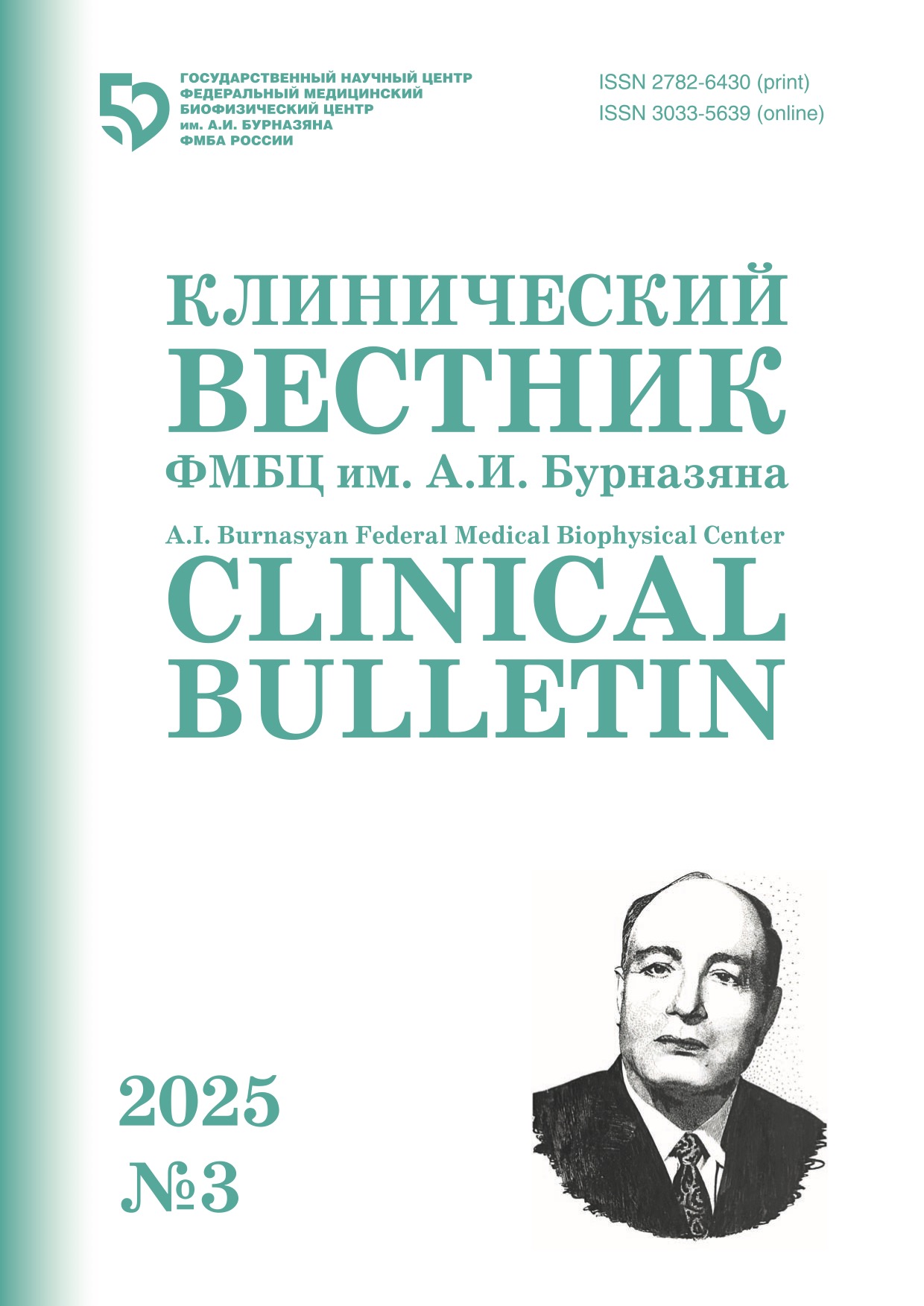A.I. Burnasyan FMBC clinical bulletin. 2024 № 3
A.V. Narykov, A.A. Zavyalov
Use of Elements of Algorithmic Neural Networks at the Current
Stage of Development of Practical Oncology
International Office, State Research Center – Burnasyan Federal Medical Biophysical Center of Federal Medical Biological Agency, Moscow, Russiа
Contact person: Narykov Anton Vadimovich: vaaanton1999@gmail.com
Abstract
The key role in healthcare system organizing belongs to the improvement of computer systems’ software that is applied already. The most promising development direction consists in creating and introducing of neural networks based on deep machine learning principle. A medicine in general and an oncology in particular actively use modern computer technologies walking along with the world. This article is observed the most promising ways of computer programs usage based on artificial neural network model and their potential in oncology practice. An information about innovative developments for last 10 years was taken from PubMed and Google Scholar data bases. The search queries included following terms: «artificial intelligence», «cancer», «radiotherapy and computer modelling» and other vocabulary and thematic forms. As a result, 19 literary sources were used. A variety of using scenarios of artificial intelligence integrated computer programs significantly expands bioengineering facilities. An artificial intelligence is already used for analyzing of histological sections, cytograms and etc. A new science discipline named “Radiomics” has appeared. Radiomics implies integration of artificial intelligence in “X-ray” and genomic map of patients which are under antitumor therapy.
Keywords: artificial intelligence in oncology, machine learning in oncology software, modern programs for managing oncology patients
For citation: Narykov AV, Zavyalov AA. Use of Elements of Algorithmic Neural Networks at the Current Stage of Development of Practical Oncology. A.I. Burnasyan Federal Medical Biophysical Center Clinical Bulletin. 2024.3:05-10. (In Russian) DOI: 10.33266/2782-6430-2024-3-05-10
REFERENCES
- Shimizu H., Nakayama KI. A 23 Gene-Based Molecular Prognostic Score Precisely Predicts Overall Survival of Breast Cancer Patients. EBioMedicine. 2019; 46:150-159.
- Shimizu H., Nakayama KI. Artificial Intelligence in Oncology. Cancer Sci. 2020 May; 111;5:1452-1460.
- Tippareddy C., Jiang S., Bera K., Ramaiya N. Radiology Reading Room for the Future: Harnessing the Power of Large Language Models Like ChatGPT. Curr Probl Diagn Radiol. 2023 Aug 30:S0363-0188(23)00133-0. doi: 10.1067/j.cpradiol.2023.08.018. Epub ahead of print. PMID: 37758604.
- Aerts H.J., Velazquez E.R., Leijenaar R.T., Parmar C., Grossmann P., Carvalho S., Bussink J., Monshouwer R., Haibe-Kains B., Rietveld D., Hoebers F., Rietbergen M.M., Leemans C.R., Dekker A., Quackenbush J., Gillies R.J., Lambin P. Decoding Tumour Phenotype by Noninvasive Imaging Using a Quantitative Radiomics Approach. Nat Commun. 2014 Jun 3;5:4006.
- Bera K., Braman N., Gupta A., Velcheti V., Madabhushi A. Predicting Cancer Outcomes with Radiomics and Artificial Intelligence in Radiology. Nat Rev Clin Oncol. 2022 Feb;19;2:132-146. doi: 10.1038/s41571-021-00560-7. Epub 2021 Oct 18. PMID: 34663898; PMCID: PMC9034765.
- Rodriguez-Ruiz A., Lång K., Gubern-Merida A., et al. Stand-Alone Artificial Intelligence for Breast Cancer Detection in Mammography: Comparison with 101 Radiologists. J Natl Cancer Inst. 2019;111:916-922.
- Kockwelp J., et al. Cell Selection-Based Data Reduction Pipeline for Whole Slide Image Analysis of Acute Myeloid Leukemia. in. Comp vis Pattern Recog Work. 2022;25:1825–1834.
- Bejnordi BE et al. Diagnostic Assessment of Deep Learning Algorithms for Detection of Lymph Node Metastases in Women with Breast Cancer. JAMA. 2017;318:2199–2210.
- Bodalal Z., Trebeschi S., Nguyen-Kim T.D.L., Schats W., Beets-Tan R. Radiogenomics: Bridging Imaging and Genomics. Abdom. Radiol. 2019;44:1960–1984.
- Siegel R.L., Miller K.D., Jemal A. Cancer Statistics, 2019. CA Cancer J Clin. 2019;69:7-34.
- Wang S., Yang D.M., Rong R., Zhan X., Xiao G. Pathology Image Analysis Using Segmentation Deep Learning Algorithms. Am J Pathol. 2019;189:1686-1698.
- Bera K., Schalper K.A., Rimm D.L., Velcheti V., Madabhushi A. Artificial Intelligence in Digital Pathology – new Tools for Diagnosis and Precision Oncology. Nat. Rev. Clin. Oncol. 2019;16:703–715.
- Mukhiyadin A., Makhazhanova U., Serikbayeva S., Kassekeyeva A., Muratova G., Karauylbayev S., Muratkhan R., Kenzhebay A. Journal of Theoretical and Applied Information Technology; 2023;101;2:458-470.
- Topf V., Kheifetz Y., Daum S., Ballhausen A., Schwarzer A., Trung K.V., Stocker G., Aigner A., Lordick F., Scholz M., Knödler M. Individual Hematotoxicity Prediction of Further Chemotherapy Cycles by Dynamic Mathematical Models in Patients with Gastrointestinal Tumors. J Cancer Res Clin Oncol. 2023 Aug;149;10:6989-6998. doi: 10.1007/s00432-023-04601-9. Epub 2023 Feb 28. PMID: 36854800; PMCID: PMC10374676.
- Weinstein J.N., Collisson E.A., Mills G.B., Shaw K.R., Ozenberger B.A., Ellrott K., Shmulevich I., Sander C., Stuart J.M. The Cancer Genome Atlas Pan-Cancer Analysis Project. Cancer Genome Atlas Research Network. Nat Genet. 2013 Oct;45;10:1113-20. doi: 10.1038/ng.2764. PMID: 24071849; PMCID: PMC3919969.
- Janowczyk A., Zuo R., Gilmore H., Feldman M., Madabhushi A. HistoQC: an Open-Source Quality Control Tool for Digital Pathology Slides. Jco Clin Cancer Inform. 2019; 3:1-7.
- Xu Z., Moro C.F., Bozóky B., Zhang Q. GAN-based Virtual Re-Staining: a Promising Solution for Whole Slide Image Analysis. Arxiv.Org. 2019.
- Zou F.W., Tang Y.F., Liu C.Y., Ma J.A., Hu C.H. Concordance Study Between IBM Watson for Oncology and Real Clinical Practice for Cervical Cancer Patients in China: A Retrospective Analysis. Front Genet. 2020 Mar 24;11:200.
- Андреев Д.А., Завьялов А.А. Медицинская информатика в обеспечении контроля качества онкологической помощи: перспективные направления развития // Вестник Российской академии медицинских наук. 2021. Т.76. №5. С. 554-559 [Andreyev D.A., Zav’yalov A.A. Medical Informatics in Ensuring Quality Control of Oncological Care: Promising Areas of Development. Vestnik Rossiyskoy Akademii Meditsinskikh Nauk = Bulletin of the Russian Academy of Medical Sciences. 2021;76;5:554-559 (In Russ.)]
Conflict of interest. The authors declare no conflict of interest.
Financing. The study had no sponsorship.
Contribution. Article was prepared with equal participation of the authors.
Article received: 13.06.2024. Accepted for publication: 11.07.2024


